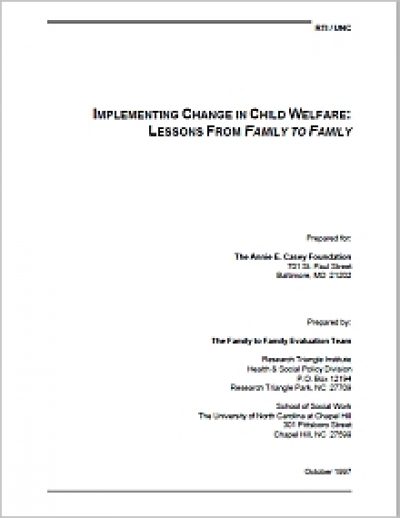School Issues
The most frequently mentioned problem was with school systems not getting adequate support for the foster child with a disability.

This research report sums up an extensive evaluation of Casey’s Family to Family initiative comparing traditional child welfare models in six areas: service, resources, supports, information, partnerships and perceptions. The research uses information collected through a series of focus groups with workers and foster parents to examine their attitudes, beliefs and self-reported practice patterns in the third year of the Family to Family Initiative’s implementation phase.
Foster care is a service delivered by line workers and foster parents. The degree to which Family to Family is successful depended largely on two factors: 1) the extent to which workers and foster parents were willing and able to engage in a partnership with each other and with the birth parents; and 2) how well the agency’s policies, structure and resources supported this partnership on a day-to-day basis.